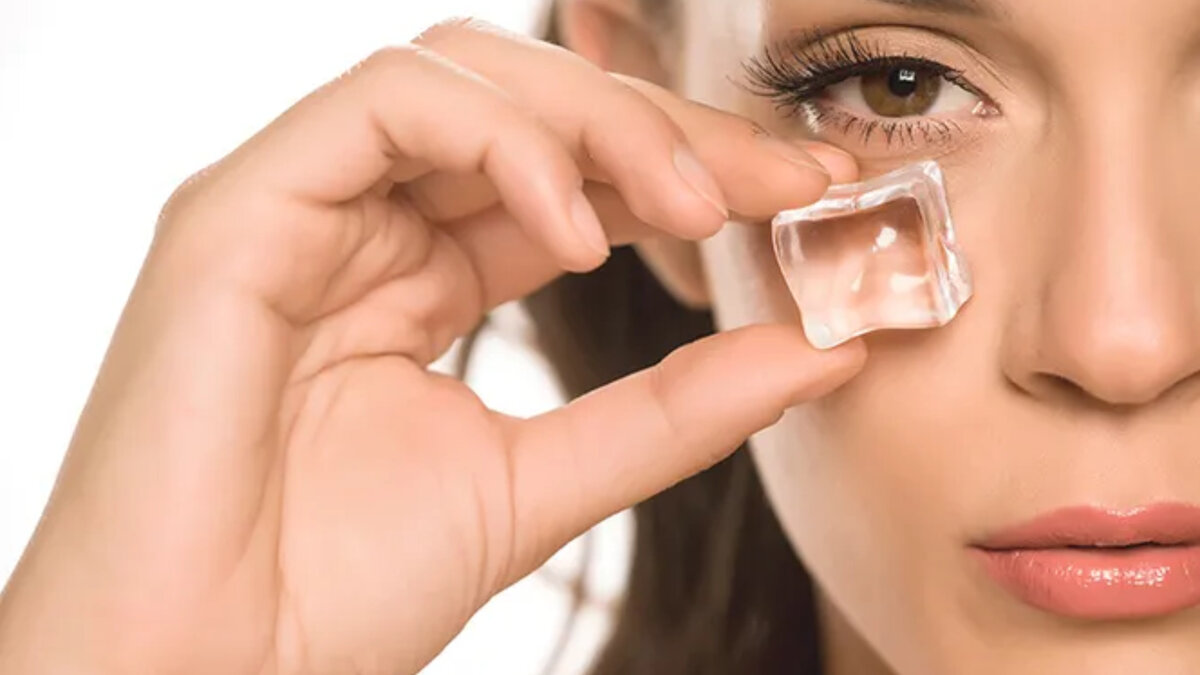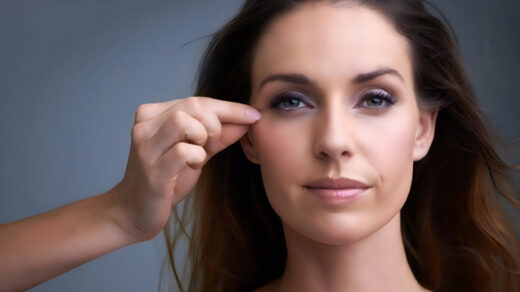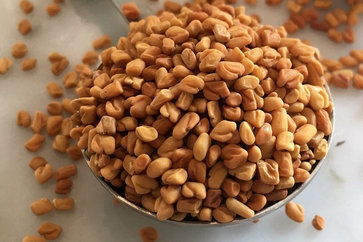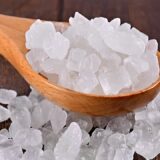How to Remove Dark Circles Under Eyes Permanently at Home
Dark circles under the eyes can be a persistent concern, often causing frustration and impacting our overall appearance. However, the good news is that there are effective ways to tackle this issue without needing to step out of your home. By incorporating simple yet powerful remedies and lifestyle adjustments into your routine, you can bid farewell to those stubborn dark circles for good.
In this article, we’ll explore a range of natural and practical solutions that can help you achieve a refreshed and revitalized look. From soothing treatments to valuable tips, you’ll find all you need to know to embark on the journey toward permanently removing dark circles under your eyes from the comfort of your own home.
Causes and Risk Factors for Dark Circles
Dark circles under the eyes can arise from various causes and risk factors. These include:
1. Sleep Deprivation and Poor Sleep Schedule: Insufficient sleep or irregular sleep patterns can lead to the development of dark circles, making the delicate skin around the eyes appear dull and tired.
2. Certain Types of Allergies: Allergic reactions, particularly those involving the eyes, can result in inflammation and discoloration, contributing to the formation of dark circles.
3. Excessive Production of Melanin: Increased melanin production in the skin under the eyes can lead to hyperpigmentation, causing the area to appear darker than the surrounding skin.
4. Fat Reduction around the Eyes: With age, the natural fat pads around the eyes can diminish, leading to a hollow appearance that accentuates the visibility of blood vessels and contributes to the development of dark circles.
5. Decrease in Skin Thickness: Skin thinning, whether due to the natural aging process or other factors, can make the blood vessels beneath the eyes more prominent, resulting in the appearance of dark circles.
6. Iron Deficiency (Anaemia): Insufficient iron levels in the body, a condition known as anemia, can cause paleness of the skin, including the under-eye area, intensifying the appearance of dark circles.
7. UV Damage from Sunlight Exposure: Overexposure to sunlight can cause the skin to produce more melanin as a protective response, potentially leading to the darkening of the under-eye region.
8. Frequent Eye Touching or Rubbing: Constant touching or rubbing of the eyes can cause irritation and inflammation, which in turn can contribute to the development of dark circles.
9. Genetics: Genetic predisposition plays a role, as some individuals are more prone to developing dark circles due to inherited traits.
10. Thyroid Issues (Hypothyroidism): Thyroid disorders, specifically hypothyroidism, can lead to changes in skin texture and color, including the under-eye area.
11. Dehydration: Both temporary and chronic dehydration, often resulting from inadequate water intake, can make the skin appear dull and accentuate the appearance of dark circles.
12. Skin Conditions like Eczema: Skin conditions characterized by inflammation, such as eczema, can cause skin discoloration and exacerbate the visibility of dark circles.
13. Smoking: The harmful effects of smoking can lead to reduced blood circulation and skin damage, contributing to the formation of dark circles.
14. Hangovers: Alcohol consumption and its dehydrating effects, coupled with lack of sleep, can result in the temporary appearance of dark circles.
15. Sudden and Extreme Weight Loss: Rapid and substantial weight loss can cause the skin to lose its elasticity, making the under-eye area appear saggy and contributing to the development of dark circles.
16. Aging: As age increases, accumulated skin damage becomes more pronounced. Thinning skin, reduced fat, and increased visibility of blood vessels all contribute to the prominence of dark circles.
17. Skin Tone: People with darker skin tones may have more noticeable dark circles due to differences in pigmentation.
18. Family History: Individuals with a family history of dark circles are more likely to develop the condition themselves, suggesting a genetic influence.
Tips: Understanding these causes and risk factors can help in identifying the appropriate approaches to manage and prevent the occurrence of dark circles under the eyes.
Home Remedies for Under Eye Wrinkles and Dark Circles
These remedies are often used in traditional and natural skincare practices. While these methods might offer some temporary relief, it’s important to note that individual results can vary, and consistent use over time might be necessary for noticeable improvements.
1. Cold Tea Bags:
- Use green tea or chamomile tea bags.
- Caffeine in tea may help constrict blood vessels, reducing blood flow and providing relief from dark circles.
How to Use: Soak tea bags in water, chill them in the refrigerator, and then place them gently on your closed eyes for 10 to 15 minutes. Repeat regularly.
6. Almond Oil and Lemon Juice:
- A mixture of almond oil and lemon juice is said to be effective in treating dark circles.
- Lemon juice contains ascorbic acid, which can help reduce water retention and puffiness around the eyes.
- Lemon juice also has a mild bleaching action, but caution is needed as undiluted lemon juice can potentially harm the skin.
How to Use: Combine about a teaspoon of almond oil with a few drops of lemon juice. Gently apply the mixture around the eye area, massage it in, and let it sit for 2 to 3 minutes. Rinse it off afterward.
2. Grated Potatoes or Grated Cucumber:
- Both potatoes and cucumbers can help reduce inflammation and puffiness around the eyes due to their vitamins, antioxidants, and anti-inflammatory properties.
How to Use: Grate raw potatoes or cucumbers and place the shreds on your eyes, leaving them on for 10-12 minutes. Alternatively, extract juice from these vegetables, soak a cotton ball in the juice, and place it over your eyes. You can also use slices of cucumber or potato directly on your eyes.
7. Rosewater:
- Rosewater is known for its refreshing and rejuvenating properties, suitable for various skin types and concerns.
- It acts as a mild astringent and can function as a skin toner as well.
- How to Use: Soak cotton eye pads in rose water and place them over your closed eyelids. Leave them on for 10 to 15 minutes. Repeat this nightly for a month to achieve the best results.
8. Tomatoes:
- Tomatoes are considered natural bleaching agents and contain antioxidants that might help reduce discoloration around the eye area.
- They could contribute to addressing dark circles.
How to Use: Mix a teaspoon of tomato juice with a spoon of lemon juice and apply the mixture under both eye areas. Allow it to remain for about 10 minutes and then rinse off with cold water. Alternatively, you can consume tomato juice mixed with lemon juice and mint leaves for potential benefits against dark circles.
3. Cold Milk:
- Cold milk acts as a natural cleanser and soothes the sensitive skin around the eyes.
- Lactic acid in milk can reduce puffiness and lighten the skin.
- Potassium in milk helps moisturize the skin, leaving it softer and supple.
How to Use: Dip a cotton ball in cold milk and apply it to the eye area, leaving it for a while before rinsing with cold water. Repeat at least three times a week.
How to Get Rid of Dark Circles and Wrinkles Under Eyes
A list of alternative home remedies for treating dark circles under the eyes.
1. Orange Juice and Glycerin: Orange juice, rich in vitamins A and C, can be combined with glycerin and applied under the eyes. Vitamins A and C are known for their beneficial effects on skin health.
2. Vitamin E Oil: Vitamin E oil is mentioned as a remedy to fight damage and reduce the intensity of dark circles. It helps eliminate free radicals that can cause cell damage.
3. Coconut Oil: Coconut oil is gentle and suitable for sensitive skin. It can help soothe the skin, reduce inflammation, and lighten the appearance of under-eye bags.
4. Turmeric and Pineapple Juice: Turmeric, a natural anti-inflammatory substance, can be applied with pineapple juice or another chosen base. This combination may help with reducing inflammation and brightening the under-eye area.
5. Dark Chocolate: Dark chocolate contains flavonols, which are plant compounds associated with protection from UV radiation damage. Flavonols are linked to slowing down the aging process by mitigating sunlight damage.
6. Omega-3 Fatty Acids: Omega-3 fatty acids are essential nutrients that support cellular structures and proper blood circulation. Since poor blood flow can contribute to dark circles, consuming omega-3-rich foods like salmon and certain nuts might help improve circulation.
7. Reduce Salt Consumption and Hydrate: High salt intake and inadequate water consumption can lead to a bloated appearance. Lowering salt intake and maintaining proper hydration can help reduce puffiness and improve the appearance of dark circles.
8. Limit Alcohol Consumption: Alcohol, like salt and coffee, can dehydrate the body and lead to fluid loss, potentially causing puffy eyes. Reducing alcohol consumption might help prevent this effect.
Frequently Asked Questions About Dark Circles Under the Eyes
1. What are dark circles under the eyes, and why do they occur?
Dark circles under the eyes are areas of darker skin or discoloration that appear beneath the lower eyelids. They can be caused by factors such as thinning skin, blood vessel visibility, lack of sleep, genetics, and aging.
2. Can allergies contribute to the development of dark circles?
Yes, allergies can contribute to dark circles. Around 30% of individuals with allergies may experience dark circles due to factors like inflammation and congestion.
3. Is there a genetic component to dark circles?
Yes, genetics play a role in the occurrence of dark circles. Approximately 50% of cases have a hereditary component, making some people more predisposed to developing them.
4. How does smoking affect the appearance of dark circles?
Smoking is associated with an increased likelihood of having dark circles. Smokers are about four times more likely to develop them due to the negative impact of smoking on skin health.
5. Does sun exposure worsen dark circles?
Yes, sun exposure can worsen the appearance of dark circles. About 90% of cases are attributed to sun damage, making sun protection essential for preventing and managing dark circles.
6. Can dehydration lead to dark circles under the eyes?
Dehydration can contribute to the appearance of dark circles. Lack of proper hydration can make the skin under the eyes appear more sunken and darker.
7. Are there any natural remedies for treating dark circles?
Yes, there are various natural remedies. These include using orange juice with glycerin, applying vitamin E oil, using coconut oil, applying turmeric with a base like pineapple juice, consuming foods rich in omega-3 fatty acids, and reducing salt and alcohol consumption.
8. What role does sleep play in preventing dark circles?
Adequate sleep is important in preventing dark circles. Poor sleep can lead to blood vessel dilation and increased blood flow, causing the appearance of dark circles.
9. Are there cosmetic treatments for severe dark circles?
Yes, there are cosmetic treatments like topical creams, chemical peels, laser therapy, and dermal fillers that can help improve the appearance of severe dark circles.
10. When should I seek medical advice for my dark circles?
If your dark circles are persistent, severe, or accompanied by other symptoms, it’s a good idea to consult a dermatologist or healthcare professional for proper evaluation and guidance.
Remember, consistency is key when using home remedies. Results may vary, and it’s important to ensure that you’re not allergic to any of the ingredients. If your dark circles persist or worsen, it’s a good idea to consult a healthcare professional for further advice.

























